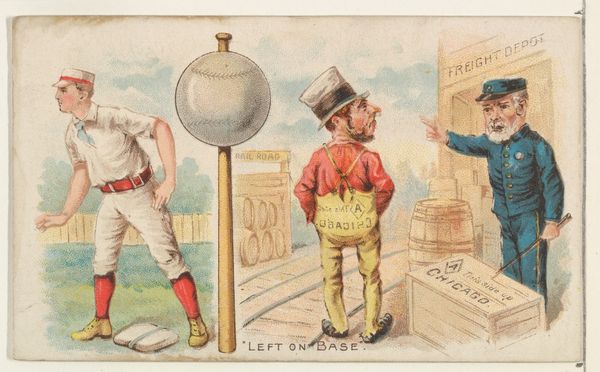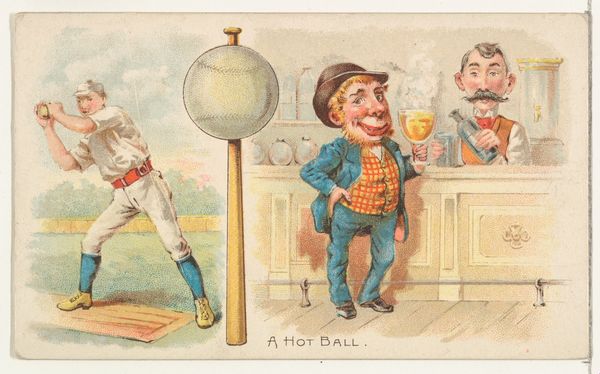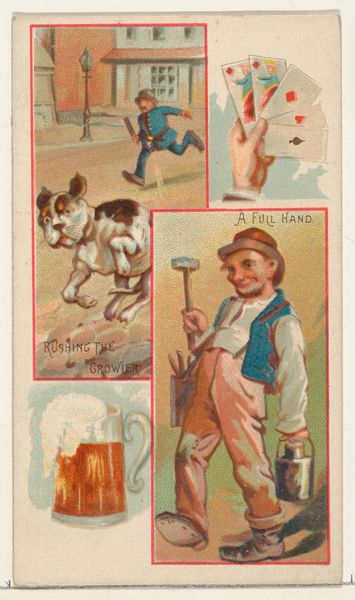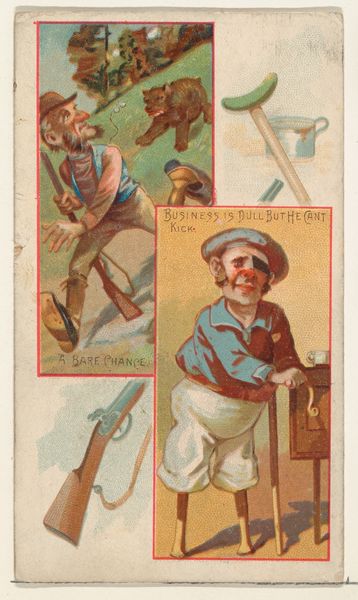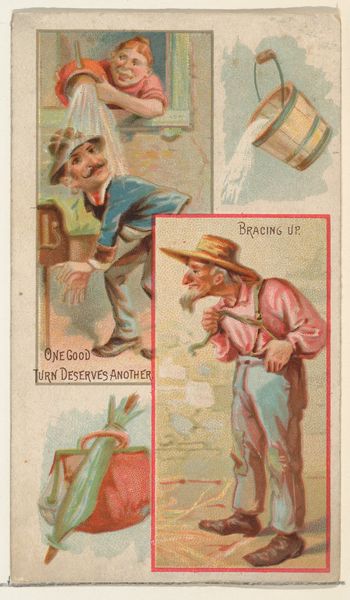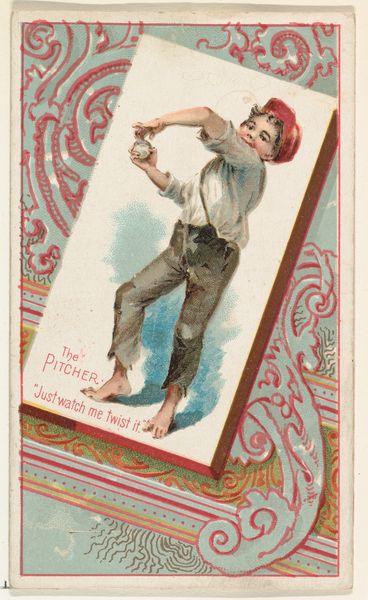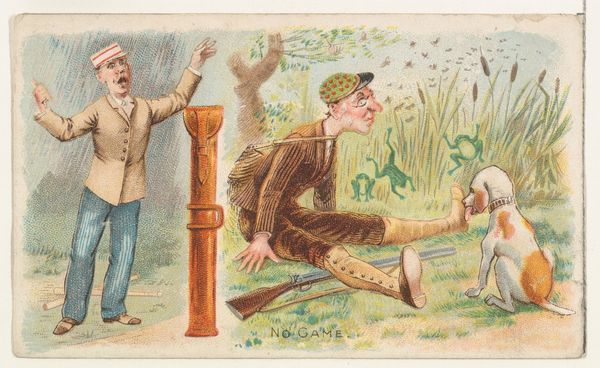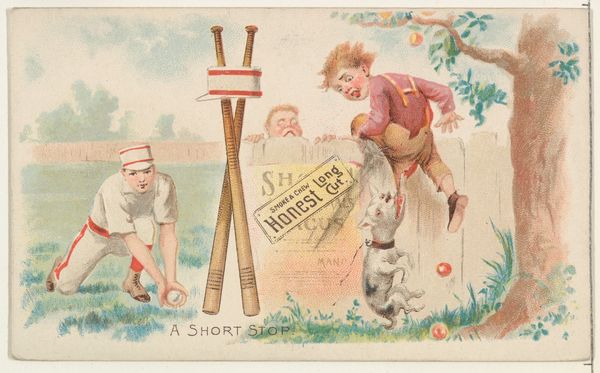
A Pitcher in the Box, from the Talk of the Diamond set (N135) issued by Duke Sons & Co., a branch of the American Tobacco Company 1888
0:00
0:00
Dimensions: Sheet: 2 1/2 × 4 1/8 in. (6.4 × 10.4 cm)
Copyright: Public Domain
Editor: This is "A Pitcher in the Box," from the Talk of the Diamond set, created in 1888 by W. Duke, Sons & Co. It's a colored-pencil print. It's playful and absurd. I’m not sure I entirely grasp what it means! What do you see in this piece? Curator: I see a rich tapestry of symbols at play. On one level, it's a comedic rendering of baseball terms, a "pitcher" literally pouring contents "into the box." However, consider the period: the late 19th century, a time of rapid industrialization and anxieties about labor. Is the figure on the right a comment on labor? Perhaps representing those exploited "in the box" of industrial life? Note the exaggerated features—how do they strike you? Editor: Well, they're caricatured. But the style reminds me of Ukiyo-e prints... Curator: Exactly! Think of Ukiyo-e's influence on Impressionism—the flattening of perspective, the bold lines. Then, consider what Ukiyo-e traditionally depicted: the floating world, leisure, entertainment. So we have an American pastime, baseball, rendered through a lens influenced by Japanese art, potentially commenting on social issues through humour. Does that make sense? Editor: Yes! So it's layering multiple visual and cultural languages on top of each other. What seemed like simple fun is actually very complex. Curator: Precisely. Images are never neutral; they carry echoes of culture, history, and psychological weight. Even a baseball card. What do you think you will take away from this observation? Editor: How symbols and satire in artwork can create a whole new level of social meaning to otherwise common and mundane topics. Thanks.
Comments
No comments
Be the first to comment and join the conversation on the ultimate creative platform.
